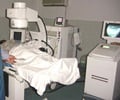Kidney disease occurs more often than we think, but it is also more treatable than we used to think, especially when caught early. Children and adolescents should be monitored carefully because kidney disease that seems to suddenly strike young adults often has its roots in childhood.
Kidney disease develops silently and all too often manifests its presence only when it’s far too late to stop the progressive loss in kidney function that will require dialysis or transplantation. More than one-third of kidney transplant patients in 2001 were between the ages of 20 and 44. Many of them likely developed renal disease in childhood, say doctors from the Children’s Center.March is kidney awareness month. On March 8, World Kidney Day, doctors want to remind parents that timely detection of kidney problems in early childhood and adolescence is the best way to curb kidney damage and even reverse some of it.
These telltale signs of early kidney disease should prompt a visit to the doctor.
· Swelling (even mild) of the hands and feet and/or puffiness around the eyes
· Decreased or increased frequency of urination
· Long-lasting changes in the color and appearance of urine (foamy urine suggests the presence of protein)
· Headaches resulting from high blood pressure
The best way to determine kidney function is to measure glomerular filtration rate (GFR), which estimates the speed at which kidneys filter waste material from the blood. To determine GFR, your doctors monitor blood levels of the substance creatinine. The higher the creatinine level, the higher the likelihood that the kidneys are not filtering at normal speed. In addition to blood tests, urinalysis can detect protein and/or blood in the urine also signs of kidney disease.
If your child has any signs or symptoms that suggest kidney disease, you should talk to your pediatrician and obtain blood studies, Fivush says.
Systemic diseases such as diabetes or lupus put children at higher risk for kidney damage; they should be monitored regularly.
Advertisement
Source-John Hopkins
SRM











